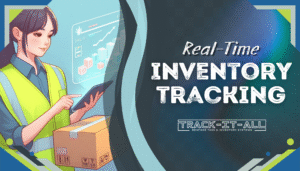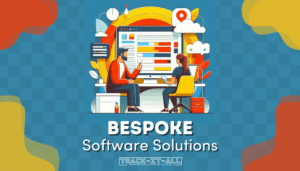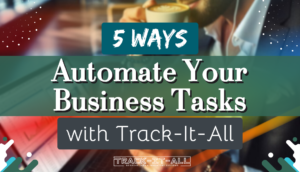A seamless onboarding process is crucial for businesses. It sets the tone for new hires, boosts productivity, and enhances employee satisfaction. However, navigating onboarding challenges can be tricky. Staffing agencies, in particular, grapple with diverse client requirements, time constraints, and manual processes. That’s where staffing management software steps in.
Common Onboarding Challenges
- Managing Diverse Client Requirements: Each client has unique needs, making it challenging to onboard new hires consistently.
- Time Constraints: Staffing agencies often need to be onboarded quickly. Comprehensive onboarding becomes a balancing act.
- Manual Processes: Paperwork overload and manual tasks slow down the process and increase the risk of errors.
- Ensuring Compliance: Staying compliant with regulations and client-specific policies is essential but complex.
- Personalizing the Onboarding Experience: Tailoring onboarding to individual hires can be time-consuming.
So, staffing management software streamlines onboarding. It automates tasks, centralizes communication, and ensures a smooth experience. From candidate management to payroll, it covers it all. Our company, Track-It-All, offers a robust solution designed for staffing agencies, simplifying the entire recruitment process.
Role of Staffing Management Software
Staffing management software is a specialized tool designed to assist staffing agencies and HR departments in efficiently managing the recruitment and placement of employees. It streamlines critical processes, including:
Automated Job Posting and Candidate Sourcing:
Staffing software simplifies posting job openings and sourcing potential candidates, ensuring a wider reach and faster response.
Efficient Resume Screening and Applicant Tracking:
The software helps sift through resumes, identifying qualified candidates and tracking their progress throughout the hiring process.
Streamlined Interview Scheduling:
Staffing management software facilitates interview coordination, reducing scheduling conflicts and ensuring timely interactions.
Integrated Payroll and Billing Systems:
By linking payroll and billing, the software ensures accurate compensation and efficient financial management.
Compliance Management with Labor Laws:
Staffing software keeps organizations compliant with legal requirements, minimizing risks.
Robust Reporting and Analytics:
It provides insights into recruitment metrics, helping optimize processes and make informed decisions.
Effective Communication Tools:
Staffing management software enables seamless interaction with candidates and clients, enhancing collaboration and engagement.
When addressing onboarding challenges, the software can:
- Streamline Paperwork and Document Management: Digitizing forms and documents simplifies the onboarding process, reducing administrative burden.
- Enhance Communication and Collaboration: Staffing software fosters real-time communication between new hires, managers, and HR, ensuring a smooth transition.
- Improve Employee Engagement through Personalized Onboarding: Customized onboarding experiences boost employee satisfaction and retention.
- Track Onboarding Progress and Metrics: The software monitors milestones, ensuring timely completion and identifying areas for improvement.
Key Features of Staffing Management Software for Onboarding
When it comes to onboarding, having the right software can make all the difference. Let’s explore the essential features that staffing management software offers to streamline the onboarding process:
Employee Self-Service Portals:
These portals empower new hires to access and complete necessary forms even before their first day. From tax documents to benefits enrollment, self-service portals enhance efficiency and engagement.
Automated Workflows:
Staffing software automates repetitive tasks, such as sending reminders or assigning training modules. This ensures consistency and frees up HR teams to focus on more strategic aspects of onboarding.
Integration with HRIS Systems:
Seamless integration with your existing HR systems allows for a unified experience. Data flows smoothly between onboarding and other HR processes, reducing manual data entry and minimizing errors.
Compliance Management:
Staffing management software keeps you compliant with labor laws and regulations. It tracks required forms, certifications, and training, ensuring that new hires meet legal requirements.
Performance Tracking:
Monitor new employees’ progress during onboarding. Identify areas for improvement and provide timely feedback to enhance their integration into the organization.
Implementing Staffing Management Software
When it comes to adopting staffing management software, making informed choices is crucial. Here are some practical tips to guide you:
Identify Specific Onboarding Needs:
Understand your agency’s unique requirements. Do you need features for candidate tracking, job posting, or client management? Prioritize what matters most.
Consider Budget and Scalability:
Evaluate the software’s cost and scalability. Will it grow with your agency? Look for solutions that fit your budget without compromising functionality.
Evaluate Vendor Reputation and Support:
Research the software provider. Read reviews, check references, and assess their customer support. A reliable vendor ensures a smoother experience.
Implementation Process Outline:
Data Migration and Integration:
Transitioning from existing systems? Ensure seamless data migration. Integration with other tools (like payroll or CRM) is essential for efficiency.
User Training and Adoption:
Train your staff thoroughly. A user-friendly interface is crucial. Invest time in training to maximize software utilization.
Process Optimization:
Customize workflows to align with your agency’s processes. Leverage automation to streamline tasks, such as scheduling and timesheets.
Emphasize Change Management:
Prepare your team for the shift. Communicate benefits, address concerns, and encourage adoption. Change management ensures successful implementation.
Measuring Onboarding Success
When it comes to successful onboarding, tracking the right metrics is crucial. Let’s explore key indicators that HR teams should focus on:
Time-to-Productivity:
How quickly do new hires become productive? Staffing management software helps monitor this by streamlining training, automating processes, and ensuring employees hit the ground running.
Employee Satisfaction:
Happy employees are more likely to stay. Staffing software allows you to gauge satisfaction through surveys and interviews, helping you fine-tune the onboarding experience.
Turnover Rates:
High turnover hurts productivity and costs money. Staffing management tools help identify patterns, allowing you to address issues early and retain talent.
Training Completion Rates:
Are new hires completing their training? Staffing software tracks training progress, ensuring everyone gets up to speed efficiently.
Emerging Trends in Onboarding and Staffing Management
Frequently Asked Questions (FAQs)
What is staffing management software?
Staffing management software is a specialized tool designed to streamline the onboarding process for new hires. It helps organizations manage tasks related to employee recruitment, training, and integration into the company. By using staffing management software, companies can automate various aspects of the hiring process, such as scheduling interviews, conducting background checks, and processing paperwork. This can significantly reduce administrative burdens and free up HR professionals to focus on more strategic, value-added tasks. Ultimately, implementing staffing management software can streamline your hiring process, leading to more efficient and effective onboarding of new employees.
How can staffing software help overcome onboarding challenges?
Staffing software offers several benefits:
- Efficiency: It automates manual tasks, reducing paperwork and administrative burden.
- Digital Onboarding: New hires receive essential documents and information digitally, avoiding paper overload.
- Centralization: Staffing software centralizes information, making it accessible to HR, IT, and management.
- Customization: It allows tailoring onboarding processes to individual roles and responsibilities.
What are the key features of staffing management software?
Staffing software typically includes:
- Employee Document Management: Storing and managing essential documents.
- Task Automation: Automating repetitive tasks like form completion.
- Training Modules: Providing learning resources for new hires.
- Communication Tools: Facilitating communication between teams.
- Integration with HR Systems: Connecting with existing HR tools.
Is there software specifically designed for staffing agencies?
Yes, there are robust solutions built for staffing and recruiting agencies. These tools address unique agency needs, such as managing temporary staffing, tracking top talent, and handling client relationships.
Can staffing software integrate with other systems?
Many staffing solutions offer open APIs, allowing seamless integration with existing HR, CRM, and time-tracking software.
Do any staffing software options offer a free trial?
Some staffing software providers offer free trials, allowing you to explore their features before committing.
How can staffing software streamline the recruitment process?
Staffing software streamlines recruitment by:
- Automating Job Postings: Posting job openings on multiple platforms.
- Applicant Tracking: Managing candidate applications.
- Scheduling Interviews: Coordinating interview times.
- Onboarding: Guiding new hires through paperwork and training.
What management features does staffing software provide?
Staffing software includes features like:
- Employee Scheduling: Efficiently managing work shifts.
- Time Tracking: Monitoring employee hours.
- Talent Management: Identifying and nurturing top performers.
- Email Communication: Sending notifications and updates.
Is staffing software suitable for in-house recruiters and staffing agencies alike?
Yes, staffing software caters to both in-house recruiters and external staffing agencies. It adapts to their specific needs and workflows.
Are there staffing software solutions available globally?
Yes, staffing firms around the world use various software options to enhance their recruitment and onboarding processes.
Bringing it to an End
Let’s recap the benefits Staffing Management Software brings to the table:
- Efficiency and Automation: By automating HR tasks, streamlining data entry, and offering real-time insights, this software simplifies processes and frees up valuable time for your team.
- Enhanced Communication: Staffing management software fosters seamless communication between recruiters, candidates, and hiring managers. Real-time updates and mobile app accessibility ensure everyone stays informed.
- Cost Savings: From reducing labor costs to streamlining payroll and invoice management, this software optimizes financial resources, benefiting both your business and employees.
- Improved Employee Experience: Efficient scheduling, candidate management, and onboarding contribute to a positive employee journey, enhancing satisfaction and retention.
- Business Outcomes: By hiring the best candidates, complying with regulations, and promoting workforce productivity, staffing management software directly impacts your bottom line.
Explore the world of staffing management software solutions. Whether you’re a small staffing firm or a global agency, find the right fit for your needs.
For the ultimate staffing management software experience, visit us at Track-It-All. Let’s transform your recruitment process and elevate your workforce management in 2024!







